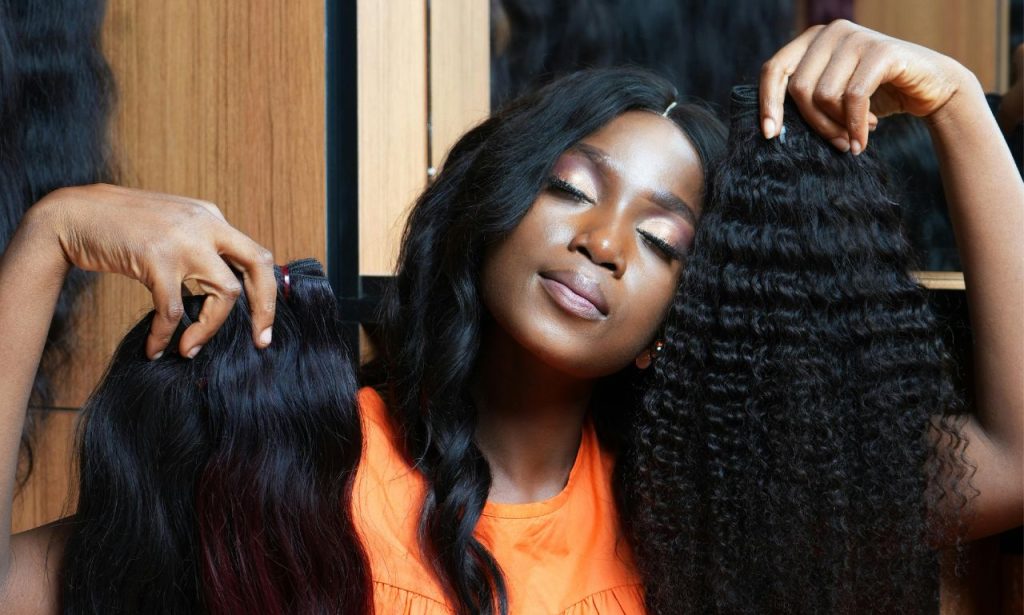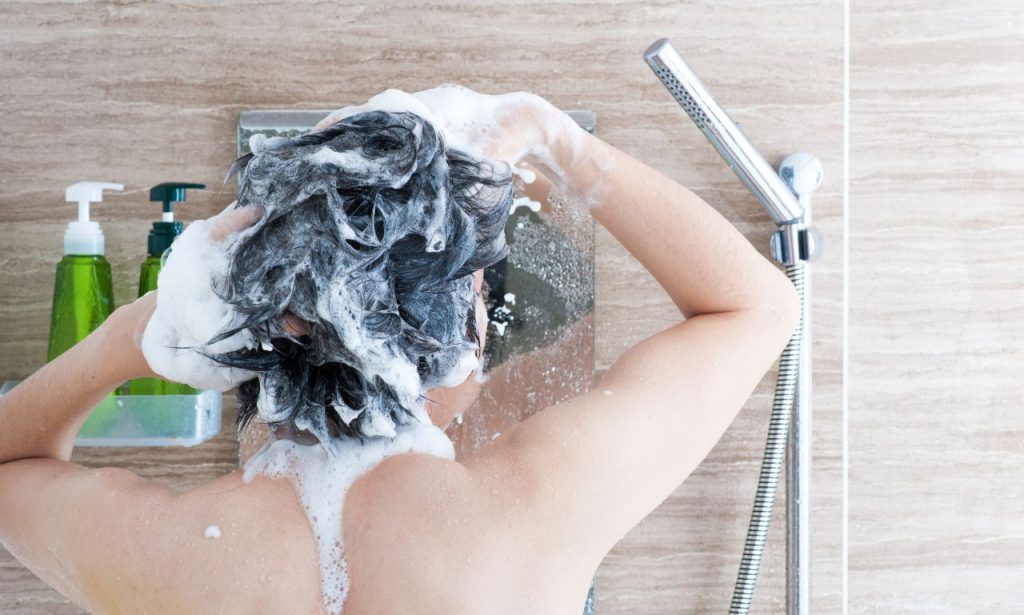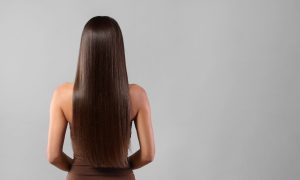We’ve all heard countless pieces of advice about hair care passed down through generations. Your grandmother swears that trimming your hair makes it grow faster. Your friend insists that brushing 100 strokes daily leads to healthier locks. The stylist at your local salon might tell you that color sticks better to unwashed hair. But how many of these widely accepted “truths” actually hold water? In this article, I’m breaking down the most persistent hair myths that continue to circulate despite lacking scientific backing.
Frequent Shampooing Can Cause Severe Damage To Your Strands
Perhaps one of the most widespread myths is that daily shampooing destroys your hair. I hear this constantly from clients and readers alike. The truth? Washing frequency should depend entirely on your specific hair type and lifestyle.
If you have an oily scalp, working out daily, or live in a polluted environment, washing your hair more frequently isn’t just acceptable—it’s necessary. Modern shampoos are formulated to be gentler than their predecessors. The key isn’t avoiding shampoo—it’s choosing the right product for your hair type.
That said, washing too frequently with harsh detergents can strip natural oils. But the answer isn’t to abandon cleansing altogether. Instead, consider alternating between regular shampoo and cleansing conditioners or using sulfate-free options that clean without excessive drying. Your scalp is skin, after all, and needs regular cleansing to remain healthy and balanced.
Weaves and Wigs Prevent Hair Damage

Many believe that protective styles like weaves and wigs automatically shield hair from damage. This oversimplification has led countless people down a path of unexpected hair loss.
While these styles can indeed protect your natural hair from environmental factors and excessive manipulation, improper installation or maintenance can cause more harm than good. Tight installations create constant tension on hair follicles, potentially leading to traction alopecia—a form of hair loss that can become permanent if not addressed early.
Also, forgetting to properly cleanse and moisturize under wigs and weaves provides the ideal setting for fungal growth and irritation of the scalp. The truth is that protective styles need proper maintenance to really protect. That means routine scalp cleansing, maintenance of moisture, and providing your hair with breaks between installations. Protection is more about how you take care of the style rather than wearing it.
Cutting Your Hair Makes It Grow Faster
This myth has persisted for generations, and I still hear it regularly in consultations. Let me be clear: cutting your hair has absolutely no effect on its growth rate. Hair grows from the scalp, not the ends.
The average growth rate for hair is about half an inch per month, controlled by genetics, overall health, and hormones. Trimming the ends can’t possibly send a message to the follicles to speed up production. What regular trims do accomplish is preventing split ends from traveling up the hair shaft. This creates the illusion of faster growth because your hair isn’t breaking as quickly.
Regular trims are certainly beneficial for maintaining healthy-looking hair, but not because they accelerate growth. They simply preserve the length you’ve already grown by preventing breakage. Understanding this distinction helps set realistic expectations for your hair journey.
You Should Brush Your Hair Every Day for Maximum Growth
The old advice to brush your hair with 100 strokes daily for better growth isn’t just outdated—it’s potentially harmful. Rigorous brushing doesn’t stimulate growth and often leads to breakage, especially with certain hair textures.
Different hair types require different approaches to detangling and maintenance. Curly and coily hair, for instance, often benefits from less frequent brushing and only when wet with conditioner. Even straight hair can suffer from excessive brushing, which can disrupt the cuticle layer and create frizz.
What actually promotes healthy hair is gentle detangling with appropriate tools—wide-tooth combs for curly textures or soft bristle brushes for straighter types. The goal should be removing tangles without stressing the hair shaft, not achieving an arbitrary number of brush strokes. Listen to what your particular hair needs rather than following one-size-fits-all advice.
Color Stays Better on Dirty Hair
This oversimplification misunderstands how hair color actually works.
Hair color penetrates the cuticle to reach the cortex, where it creates chemical changes to alter appearance. While excessive oil can potentially protect your scalp from irritation during the coloring process, a buildup of products, natural oils, and environmental residue can actually create a barrier that prevents color from penetrating evenly.
The ideal scenario is hair that’s been washed 24-48 hours before coloring—clean enough for color to penetrate effectively but with a small amount of natural oil to protect the scalp. Products like dry shampoo, hairspray, and heavy silicones should be thoroughly removed before coloring to ensure even results. The key is balance, not extremes of either completely clean or excessively dirty hair.
Ponytails, Dreads, and Braids are Stylish Choices
While these styles are definitely fashionable and culturally appropriate, the myth lies in considering them to be inherently harmless style choices regardless of their impact on hair health.
Tight ponytails, particularly those secured with elastic bands rather than soft cloth ties, place tension that may lead to breakage around the hairline and crown and lead to breakage. Similarly, dreads and braids put in too tightly can place excessive strain on follicles. The constant pulling places tension on the hairline, which may lead to permanent recession due to traction alopecia.
This does not mean that you have to completely avoid these styles. The secret is moderation and proper technique. Change your hairstyles frequently, use proper hair accessories, and ensure braids and locs are not causing headaches or pain—a sure sign that they are too tight. Give your hairline regular reprieves from pulling styles, and try looser versions that yield similar looks without the pressure.
Dandruff Signifies a Dry Scalp
The assumption that dandruff is caused by dryness leads many people to avoid washing their hair or to apply oils to an already irritated scalp, potentially worsening the condition.
In fact, dandruff is typically caused by an overgrowth of a normally present yeast called Malassezia. The yeast is nourished by scalp oils, hence the reason why dandruff tends to be worse on oily scalps than dry scalps. The flaking occurs because your scalp’s cell turnover rate increases in response to irritation.
Treatment must be directed at controlling the population of microorganisms using medicated shampoos containing ingredients like zinc pyrithione, ketoconazole, or selenium sulfide. There is a need to cleanse often in order to control dandruff, not something to avoid. In people with truly dry scalps that are flaking, the flakes tend to be finer and less oily than flakes of dandruff. The solution here is gentle cleansing and appropriate moisture, not avoiding washing altogether.
Plucking One Gray Hair can Result in Three More
We’ve all heard this warning, usually delivered with dramatic seriousness by well-meaning relatives. The scientific reality, however, is far less alarming.
Each hair follicle operates independently. Plucking one gray hair affects only that specific follicle and has zero impact on neighboring follicles. The graying process is determined by genetics and aging as follicles gradually lose their ability to produce melanin, the pigment that gives hair its color.
What happens when you pull out a gray hair is that the same follicle will, over time, grow out another gray hair—it will not simply begin producing pigment again. And also, frequent plucking can actually damage the follicle and result in no growth whatsoever. If you’re concerned about grays, then try accepting them or finding out what color options there are, rather than reaching for the tweezers.
Is it a Myth to Not Wash Your Hair Every Day?

The blanket statement that no one should wash their hair daily oversimplifies the complex relationships between hair types, scalp conditions, and environmental factors.
The key factor isn’t adhering to an arbitrary schedule but understanding your individual hair needs. Signs you’re washing too frequently include excessive dryness, brittle texture, or color fading rapidly. Signs you’re not washing enough might include itchiness, odor, or scalp irritation. Your washing frequency should adjust according to season, activity level, and how your hair responds. There’s no universal rule here—just what works for your specific situation.
Conclusion
Hair care shouldn’t be guided by myths and outdated advice passed down through generations. What works best is understanding the science behind your unique hair type and scalp condition, then developing a personalized routine based on this knowledge.
Many practices we accept without question actually do more harm than good. By challenging these myths and adopting evidence-based approaches instead, you can achieve healthier hair without unnecessary damage or frustration.
ALSO READ: What are Some of the Essential Pieces to Wear this Season?
FAQs
No. Hair growth occurs at the scalp and isn’t affected by trimming the ends. Regular trims prevent breakage, creating the illusion of faster growth.
It depends on your hair type. Oily or fine hair may benefit from daily washing, while dry or curly hair typically needs less frequent cleansing.
No. Each hair follicle functions independently. Plucking affects only that specific follicle and won’t cause nearby hairs to turn gray.
Generally no. Dandruff is usually caused by a yeast that feeds on scalp oils, so adding more oil often worsens the condition rather than helping it.
No. Excessive brushing typically causes breakage rather than stimulating growth. Gentle detangling with appropriate tools is more beneficial.

